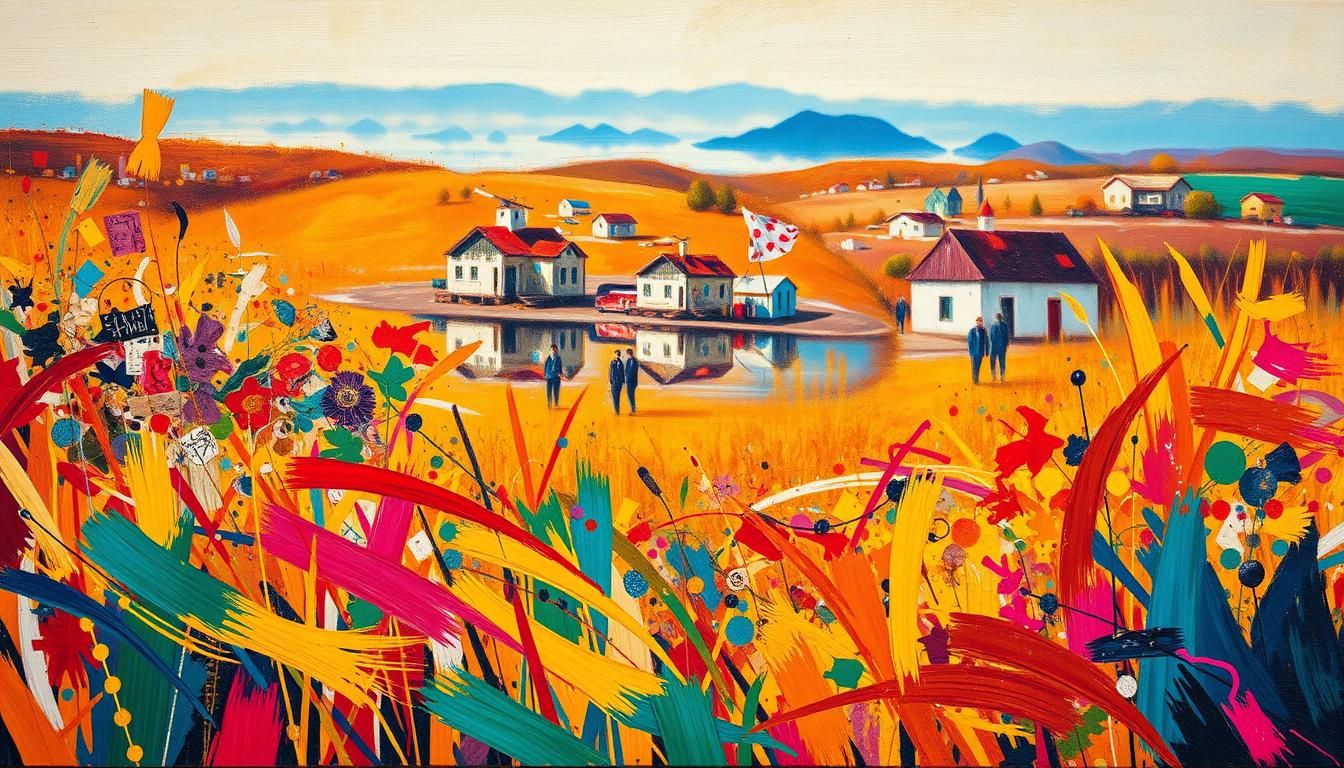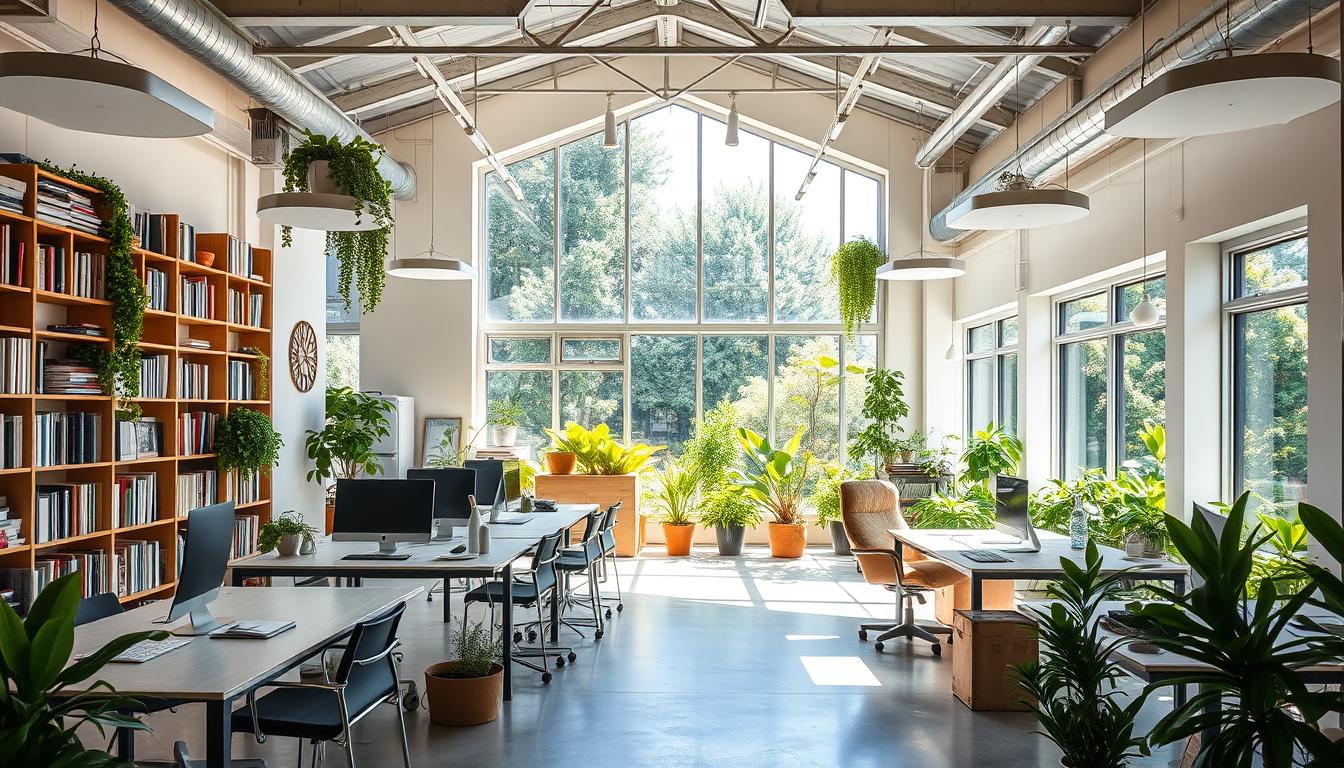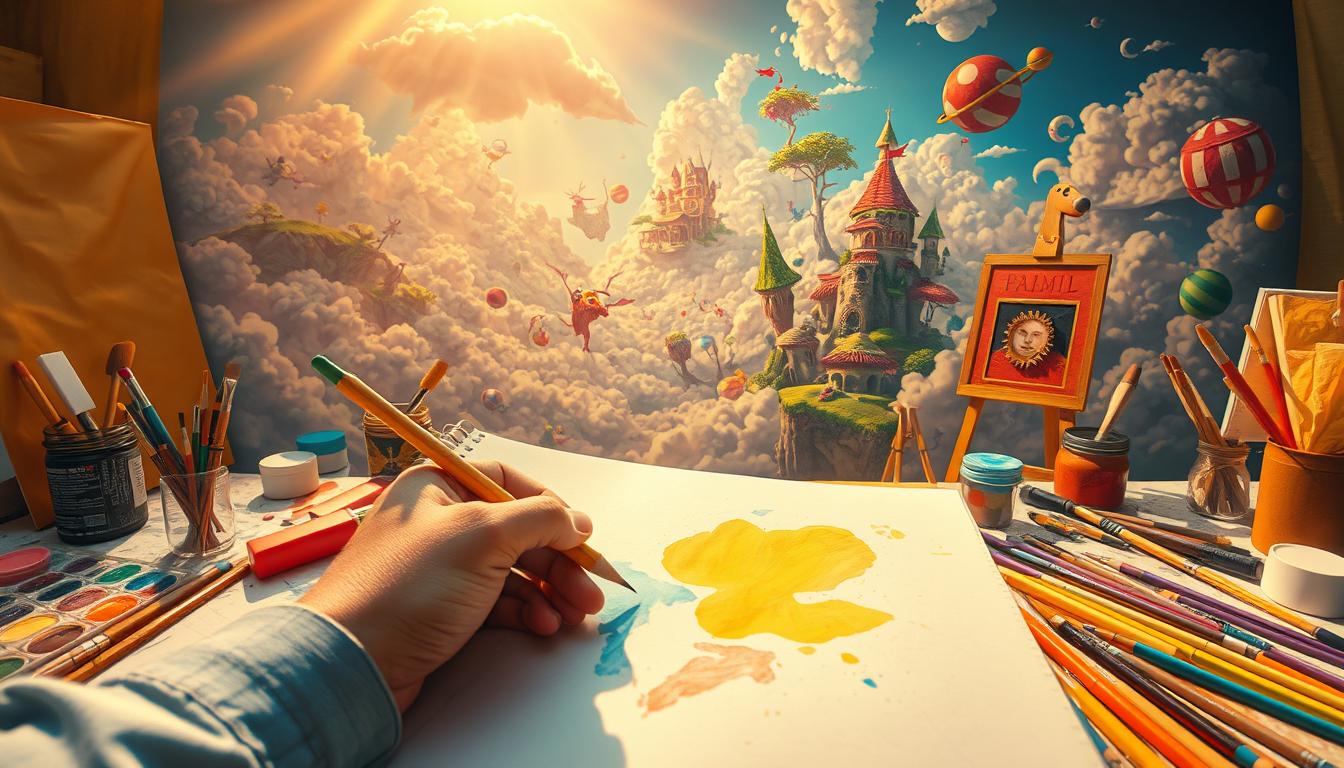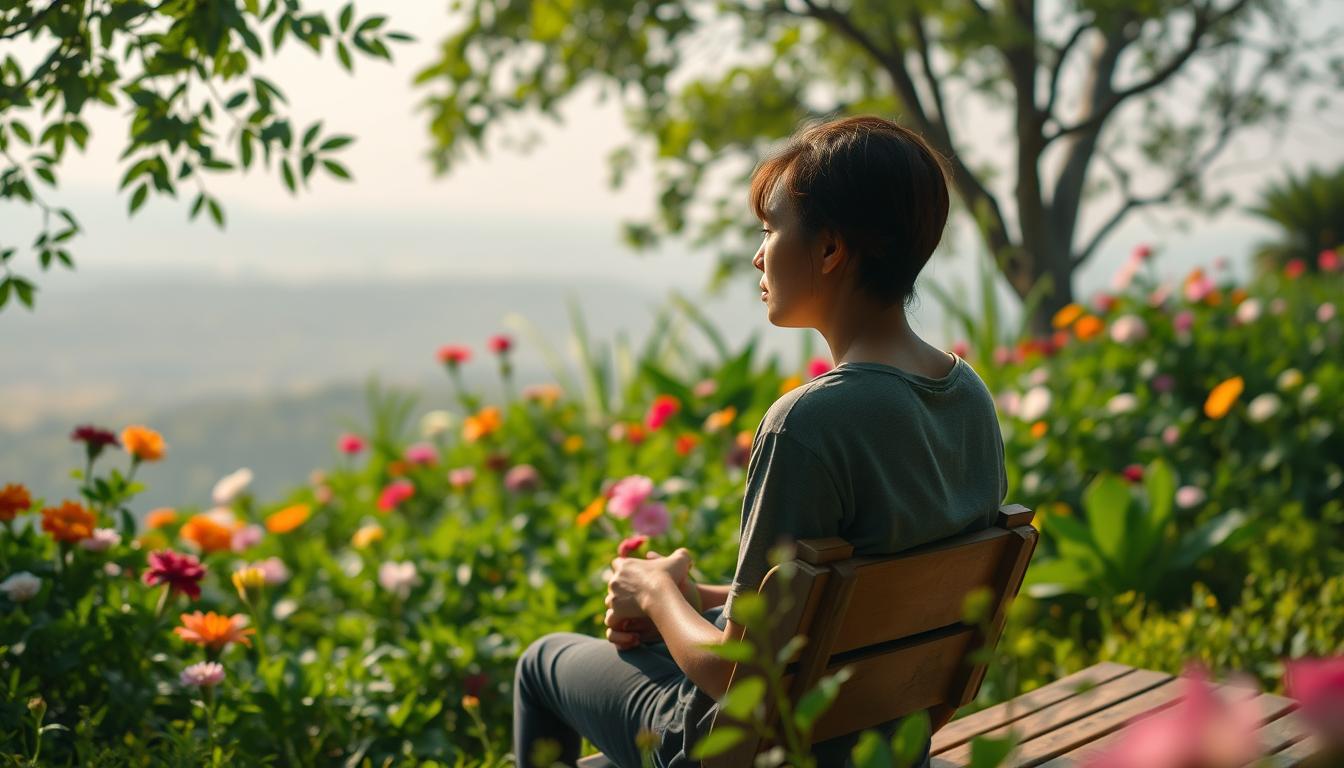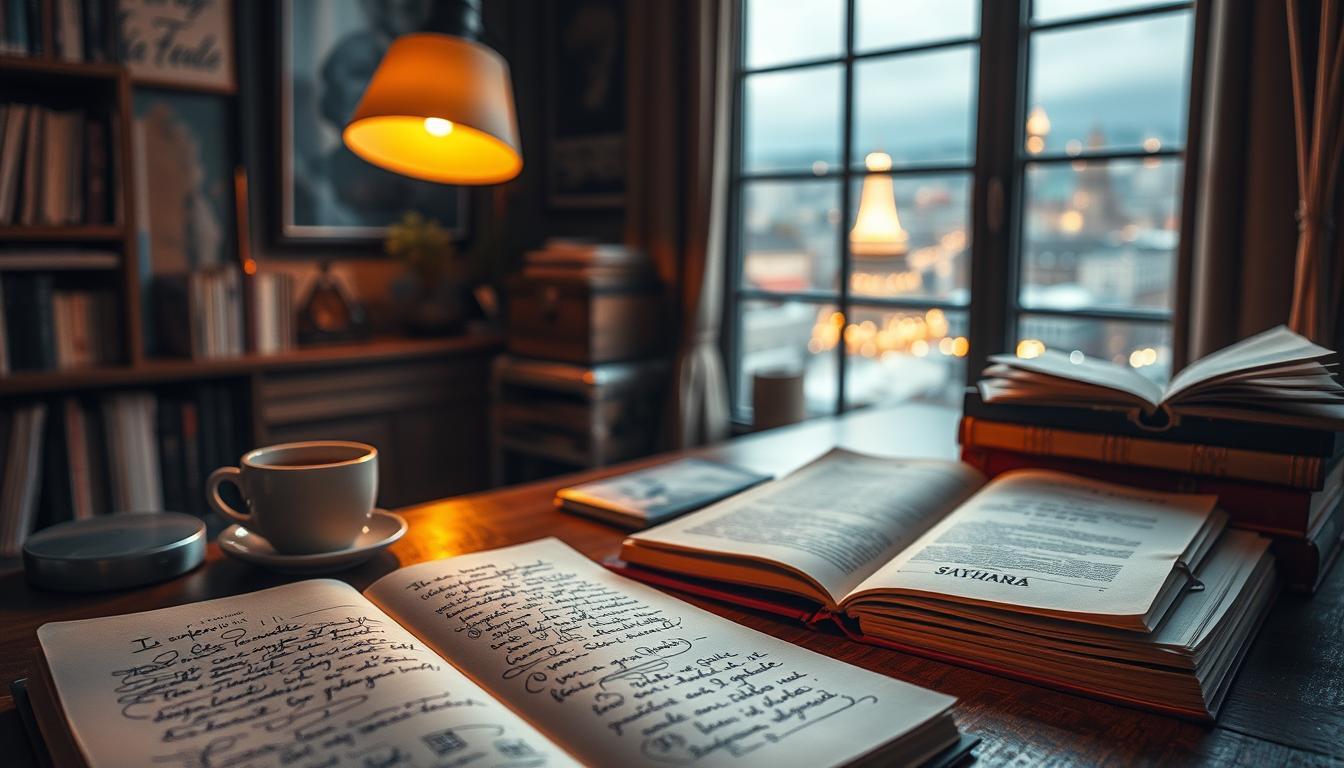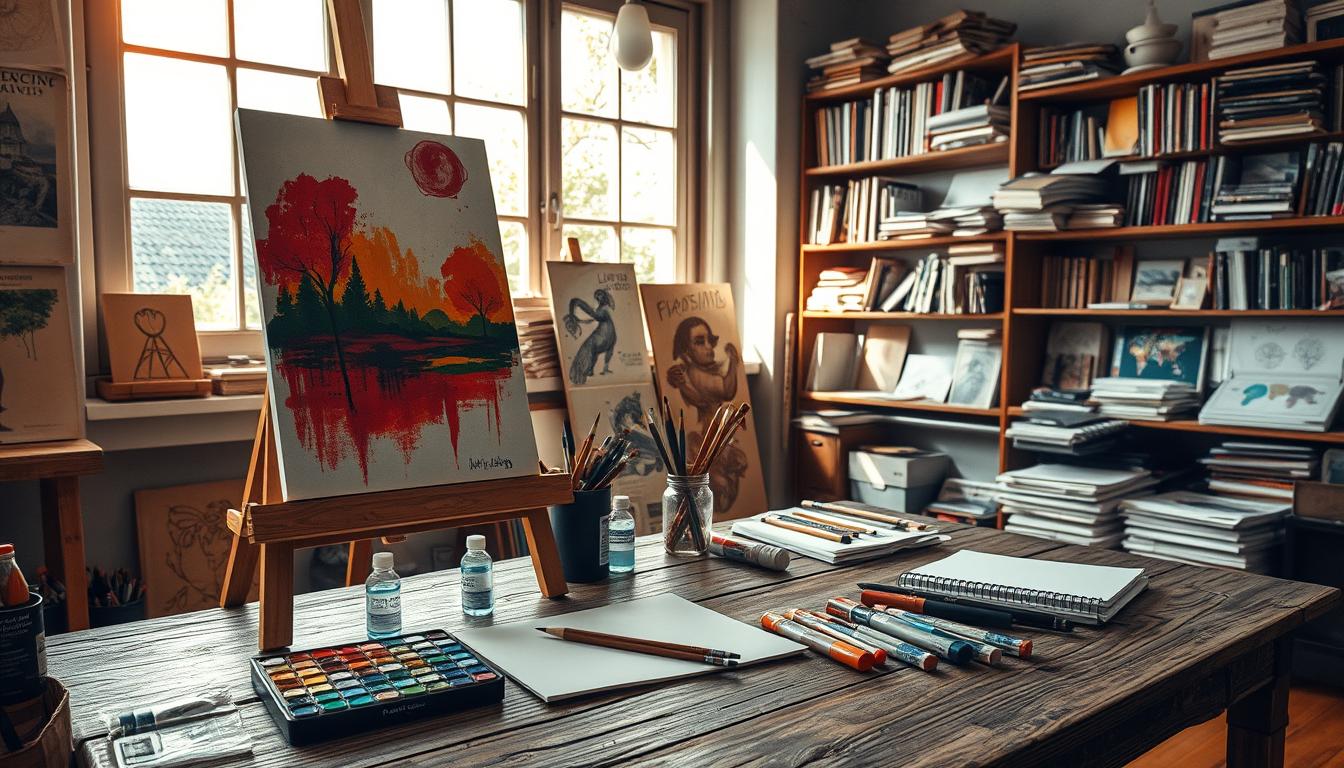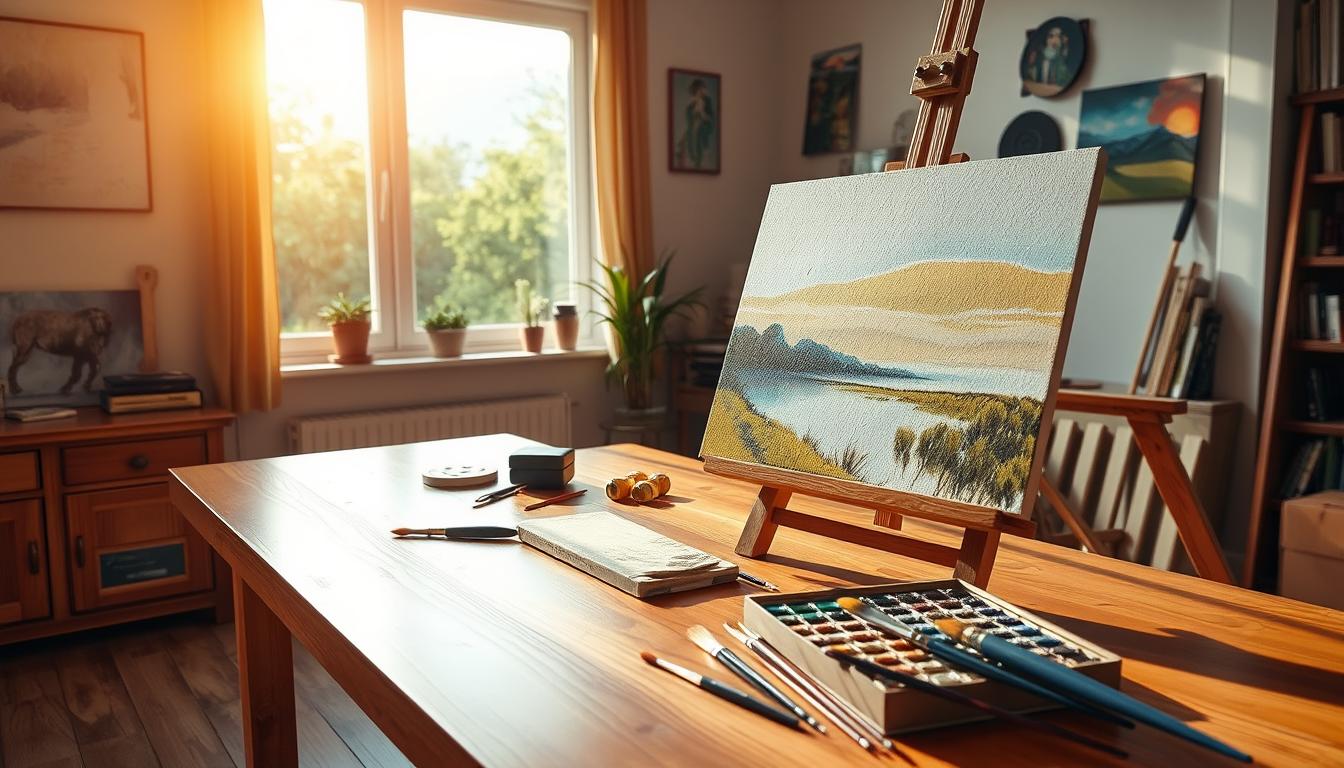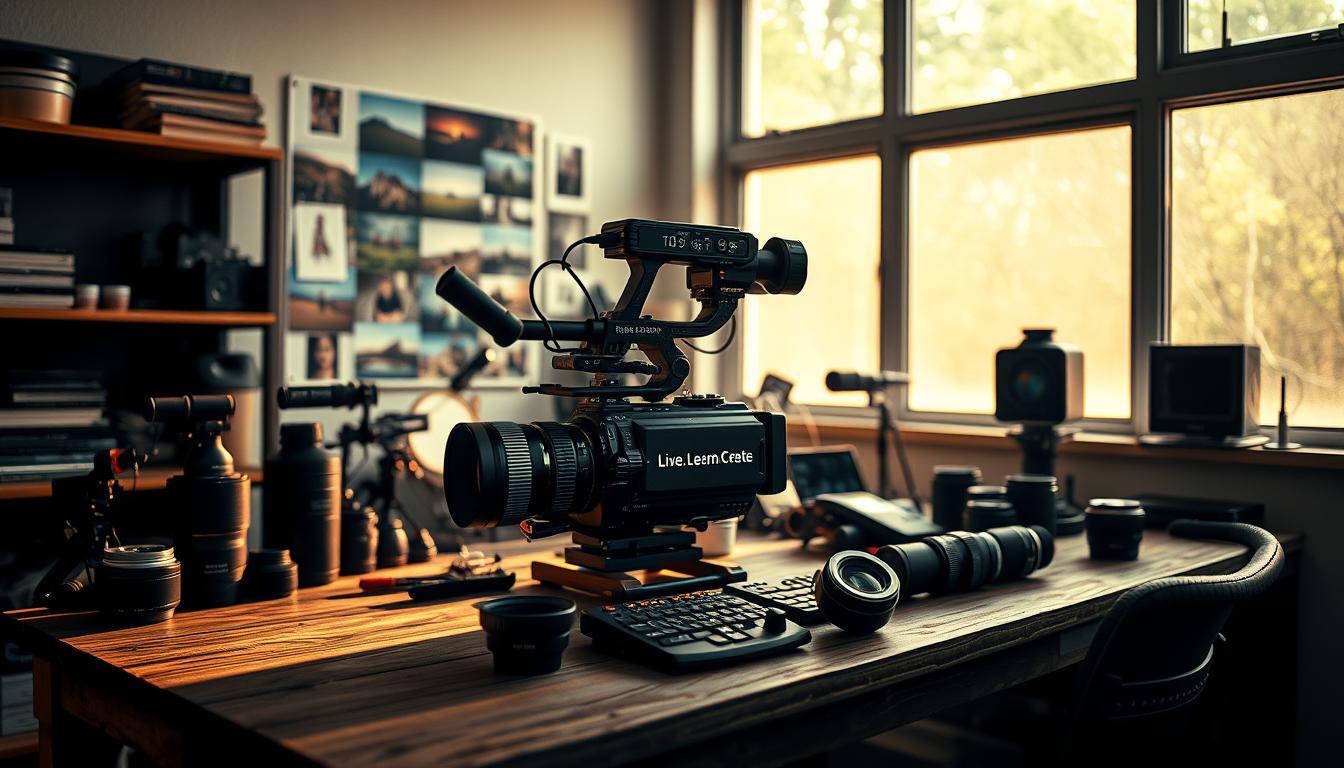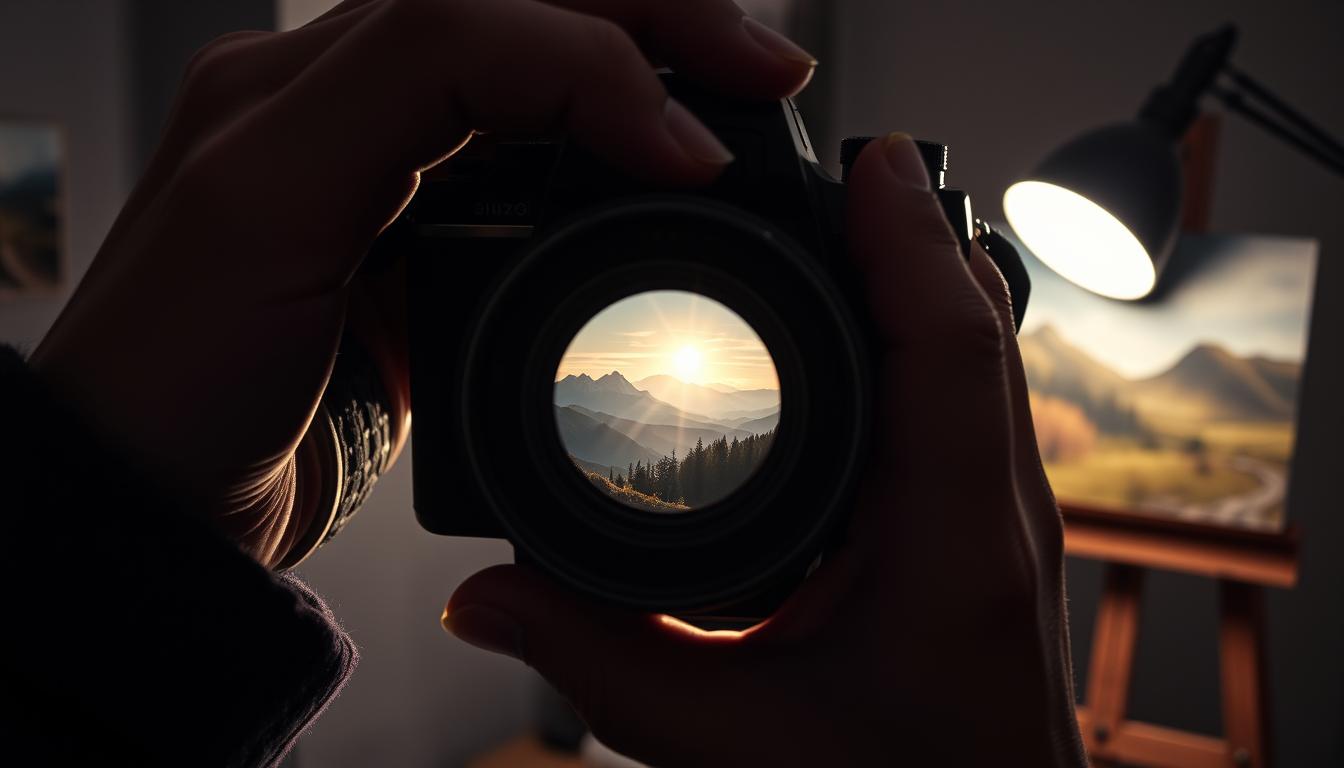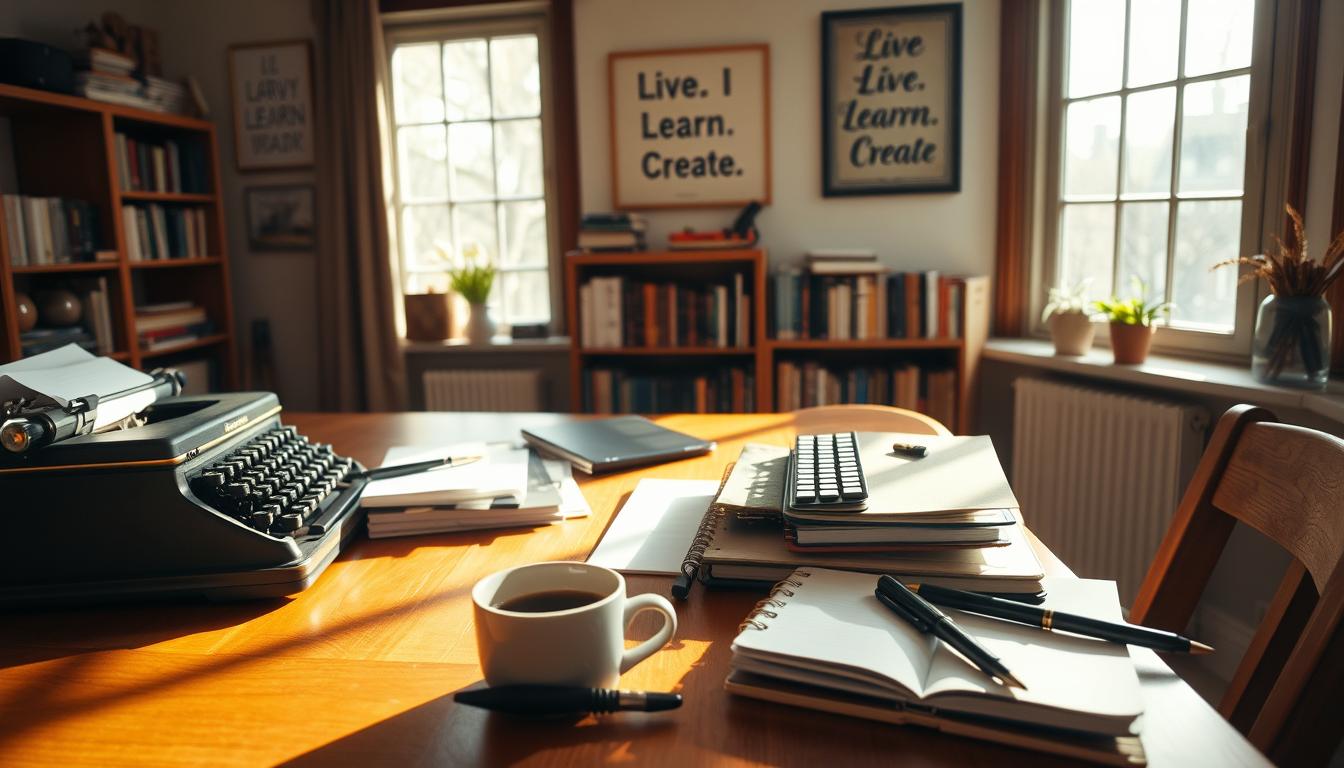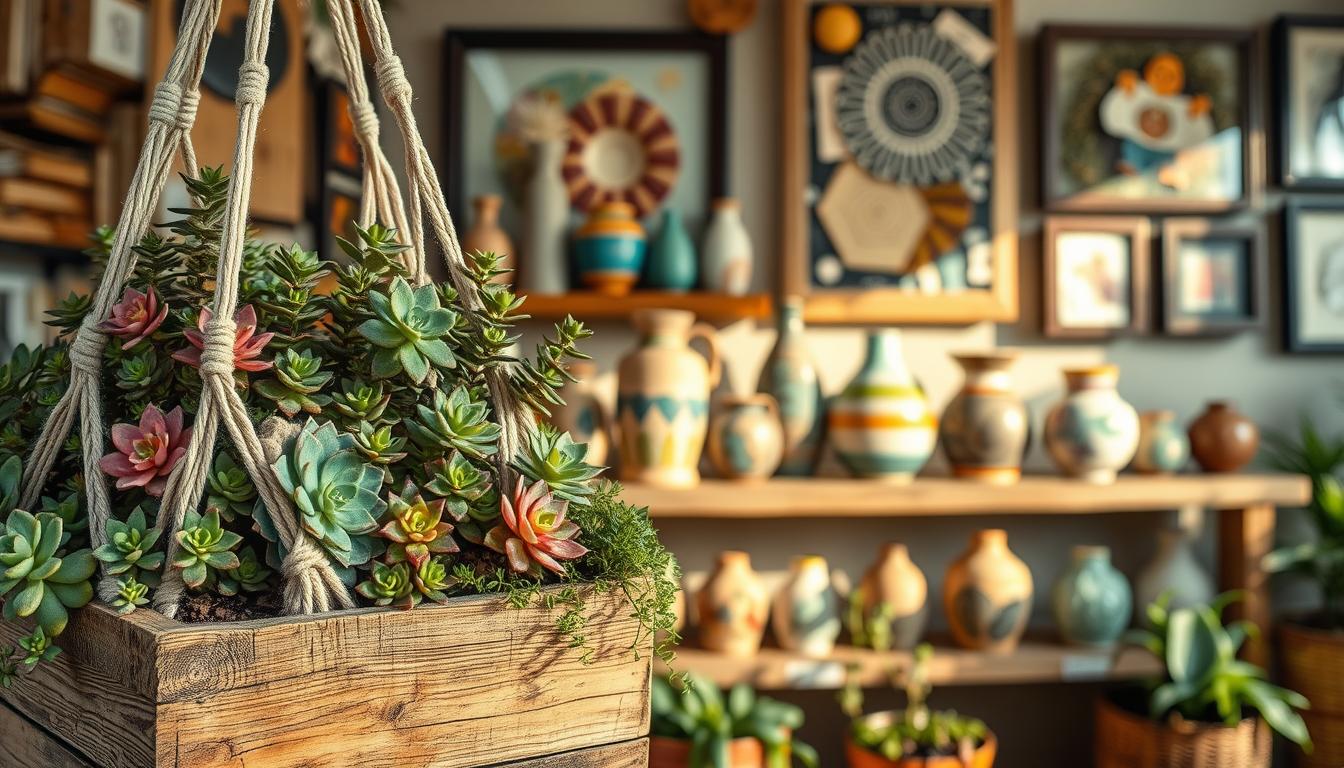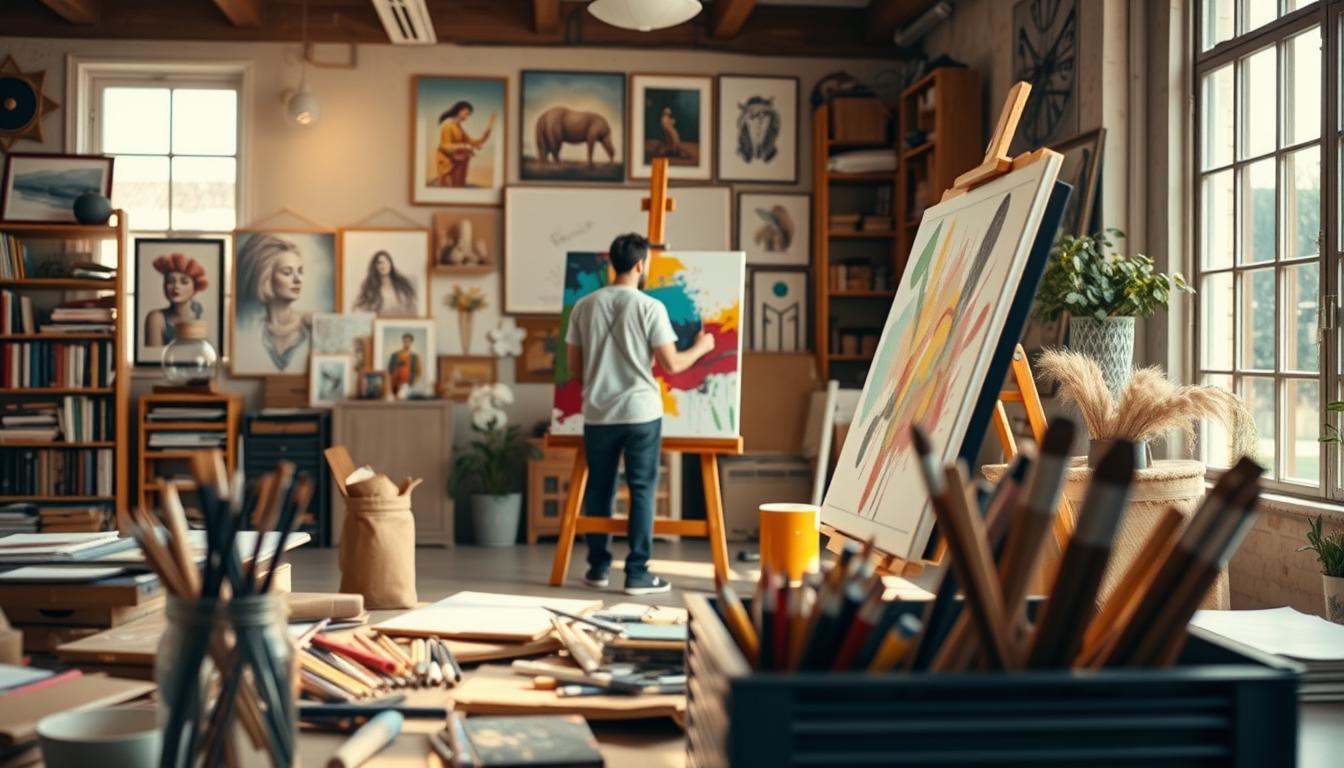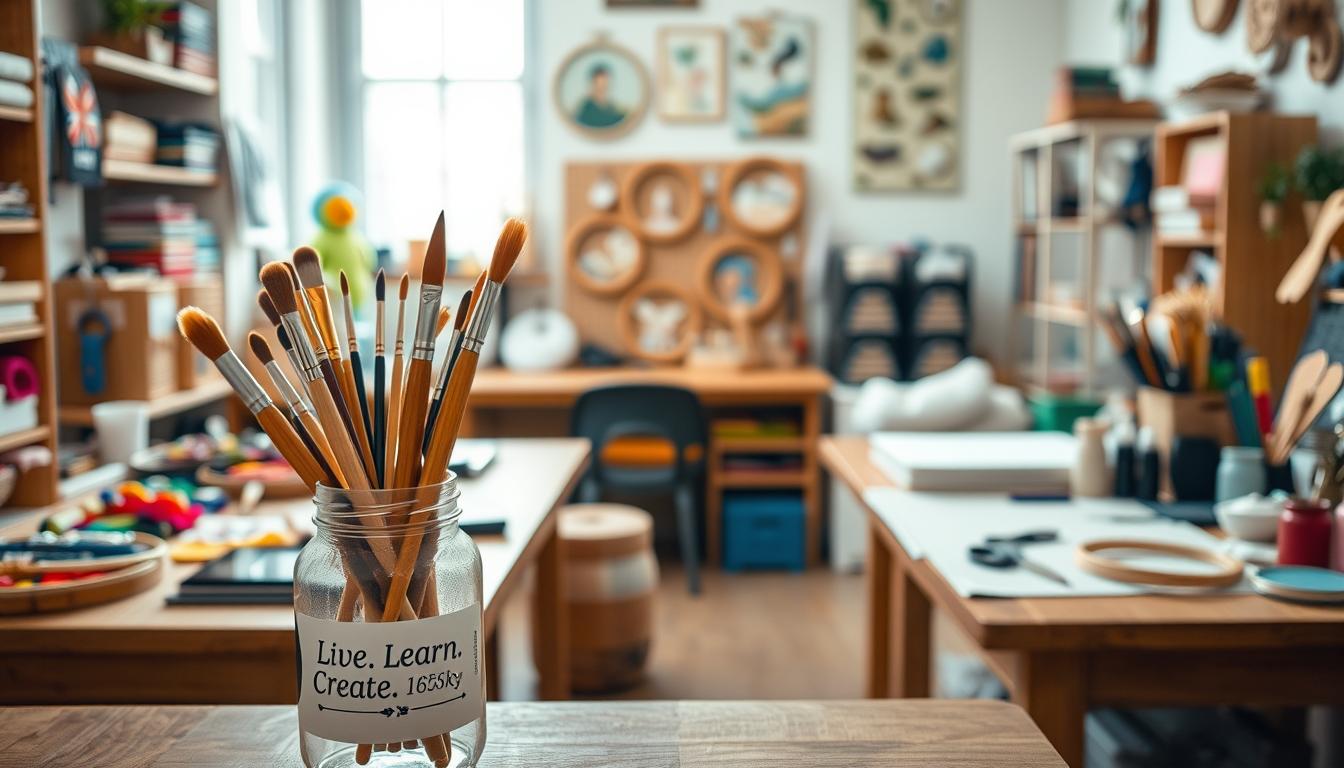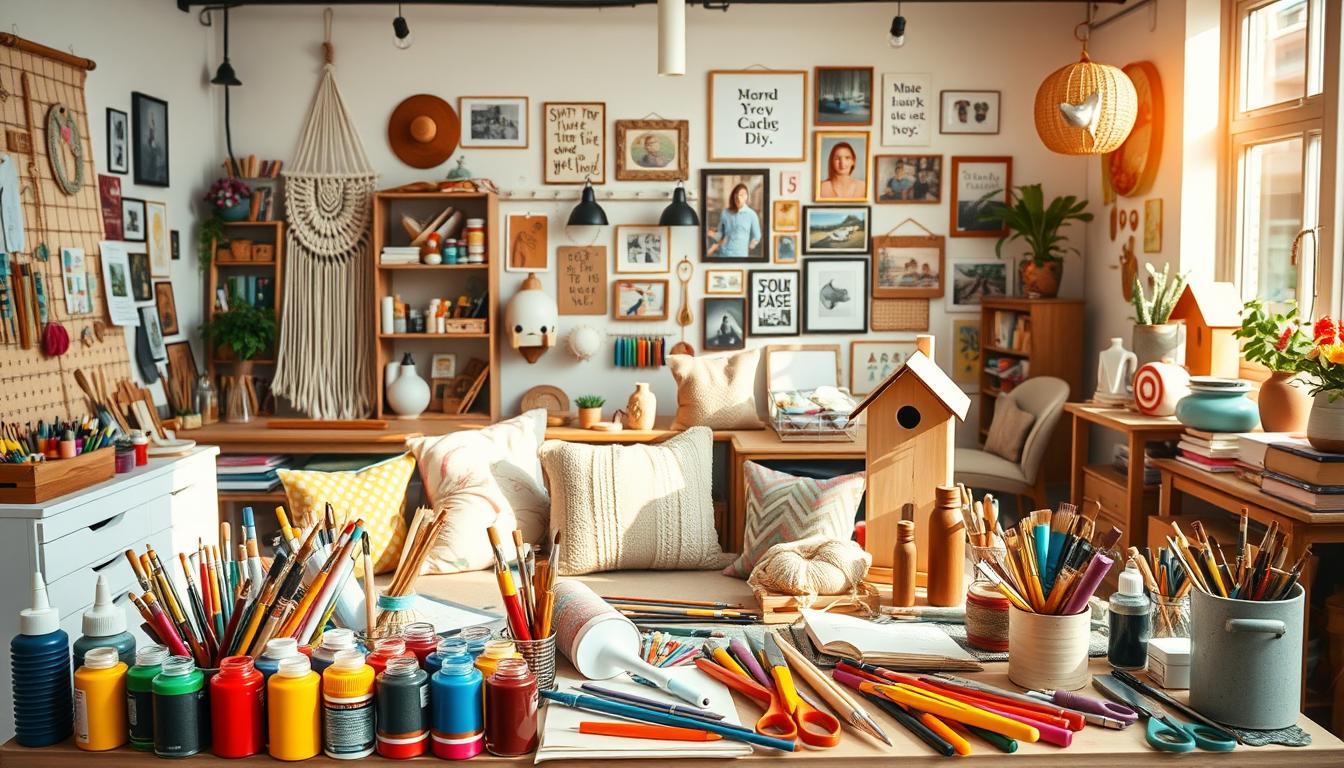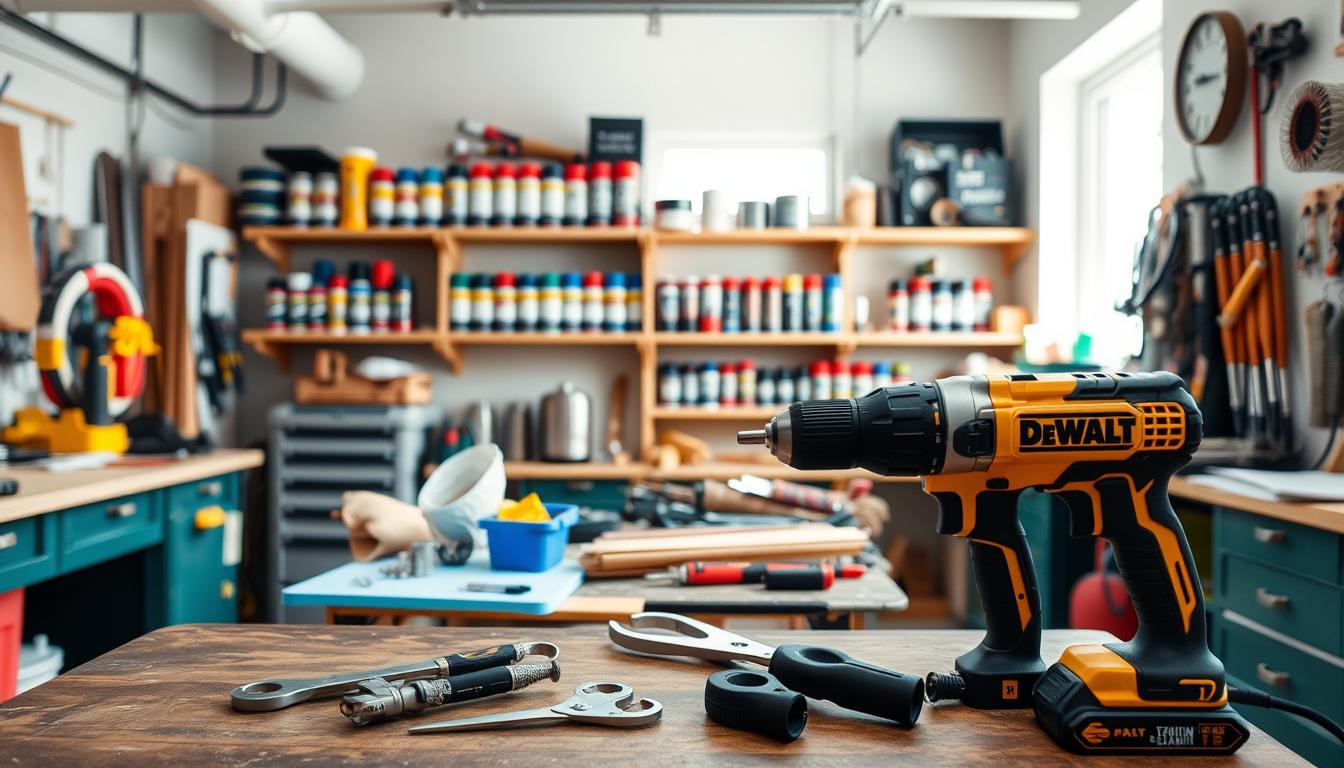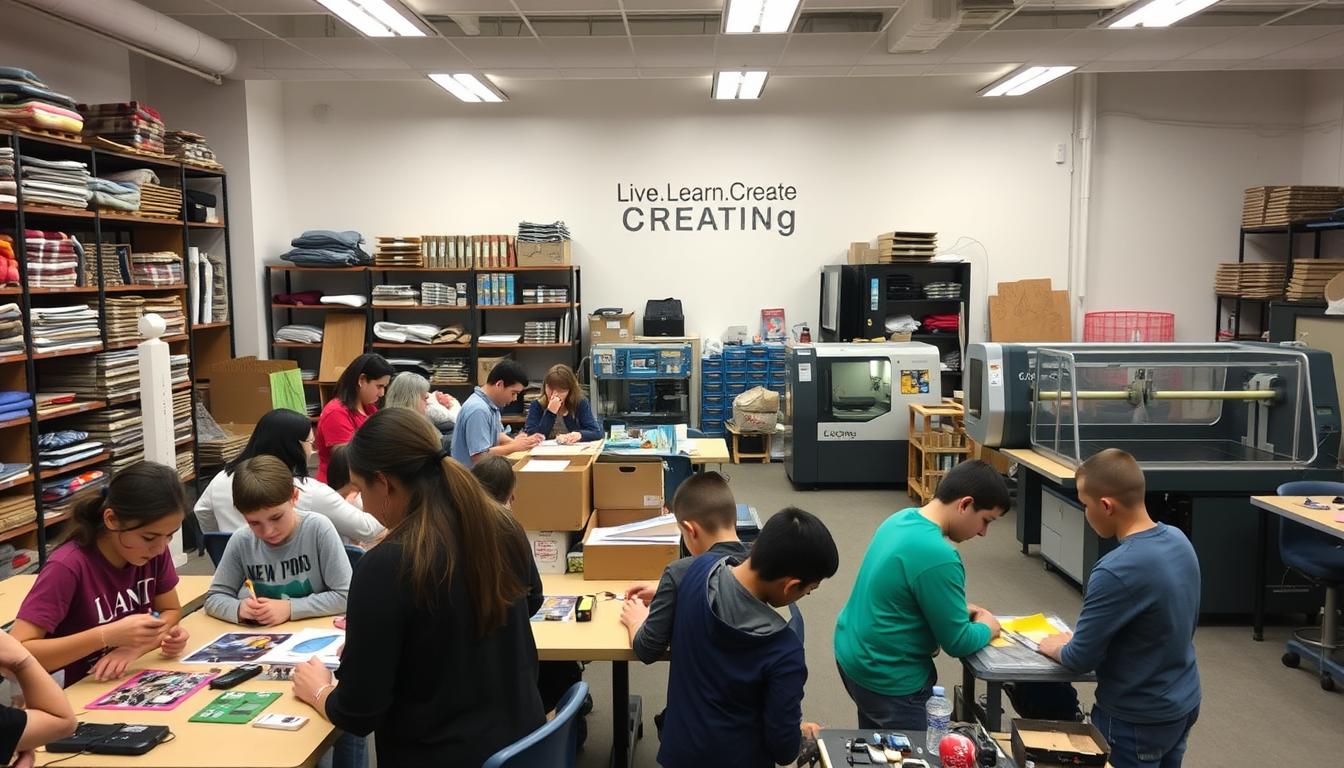“The true sign of intelligence is not knowledge but imagination.” – Albert Einstein. This quote really hits home with ‘bad art’ and the freedom to create freely. By embracing ‘bad art,’ we unlock our imaginative thinking. This leads to a more positive and creative self.
Creating ‘bad art’ isn’t about making something beautiful. It’s about the journey, not the end result. It’s a chance to let go of our critical side and enjoy artistic expression for itself. This opens us up to new creativity and personal growth.
For those ready to start, there are many resources out there. You can find art supplies and sketchbooks on Amazon. They’re designed to help you begin your artistic journey.
Key Takeaways
- Embracing ‘bad art’ fosters imaginative thinking and personal growth.
- Creating without judgment allows for a more positive creative experience.
- Resources like art supplies and sketchbooks can aid in your artistic journey.
- ‘Bad art’ is about the process, not the product, promoting a healthier relationship with creativity.
- Letting go of critical selves can enhance artistic expression.
Understanding ‘Bad Art’ and Its Origins
‘Bad art’ is a world where creativity has no limits. It’s where original ideas grow. This idea makes us rethink what art is and how we see it.
The term ‘bad art’ might sound negative at first. But it’s really about freedom in creativity. Artists can try new things and express themselves in unique ways.
The Concept of Bad Art
‘Bad art’ goes against the usual rules and methods. It’s about trying new styles, materials, and ideas. This leads to pieces that are both unique and innovative.
This idea is all about innovative thinking and original ideas. It challenges what we think is ‘good’ or ‘acceptable’ in art.
Historical Examples of Bad Art
Many art movements have been called ‘bad art’ because they were different. For example, the Impressionists were first seen as not following traditional ways.
| Art Movement | Characteristics | Initial Reception |
|---|---|---|
| Impressionism | Emphasis on light and color | Criticized for lack of technique |
| Cubism | Fragmented objects, multiple perspectives | Seen as radical and confusing |
| Abstract Expressionism | Spontaneous, gestural brushstrokes | Considered chaotic and lacking skill |
Modern Interpretations and Movements
In today’s art, ‘bad art’ keeps changing. It welcomes new ways to express and challenge our views on creativity. Modern artists use ‘bad art’ to explore design creativity and break art’s old rules.
Learning about ‘bad art’ helps us see its value. It encourages artists to be creative without fear of being judged.
The Psychological Benefits of Creating Without Judgment
Creating without worrying about the outcome brings many benefits. Making ‘bad art’ can be very therapeutic. It lets us express ourselves freely, without the need for perfection.
This freedom can make us feel more positive and resilient. It’s not just about the art; it’s about the process and how it makes us feel. By embracing imperfection, we can reduce anxiety, boost our self-esteem, and become more mindful.
Reducing Anxiety Through Free Expression
Creating without judgment can greatly reduce anxiety. When we’re creating, our minds are focused on the task. This gives us a break from our worries.
As Dr. Jane Smith, an art therapist, notes, “The act of creating is a form of mindfulness. It allows individuals to be present in the moment, letting go of their anxieties and fears.” Using ‘bad art’ can help manage our anxiety levels.
Boosting Self-Esteem by Embracing Imperfection
Creating ‘bad art’ can also boost our self-esteem. By embracing imperfection, we learn to accept ourselves as we are. This acceptance can make us more confident and self-assured.
A study showed that those who made ‘bad art’ had higher self-esteem than those who aimed for perfection. The table below summarizes the findings:
| Group | Pre-Activity Self-Esteem Score | Post-Activity Self-Esteem Score |
|---|---|---|
| ‘Bad Art’ Group | 4.2 | 5.8 |
| ‘Perfect Art’ Group | 4.1 | 4.3 |
Encouraging Mindfulness in Artistic Practice
Mindfulness is being present in the moment. Creating ‘bad art’ encourages this. By focusing on the process, we become more aware of our thoughts and feelings.
“The creative process is a meditation in action. It allows us to tap into our inner world and connect with our true selves.” –
As we continue to create without judgment, we become more mindful. This mindfulness can help us face challenges with ease and resilience.
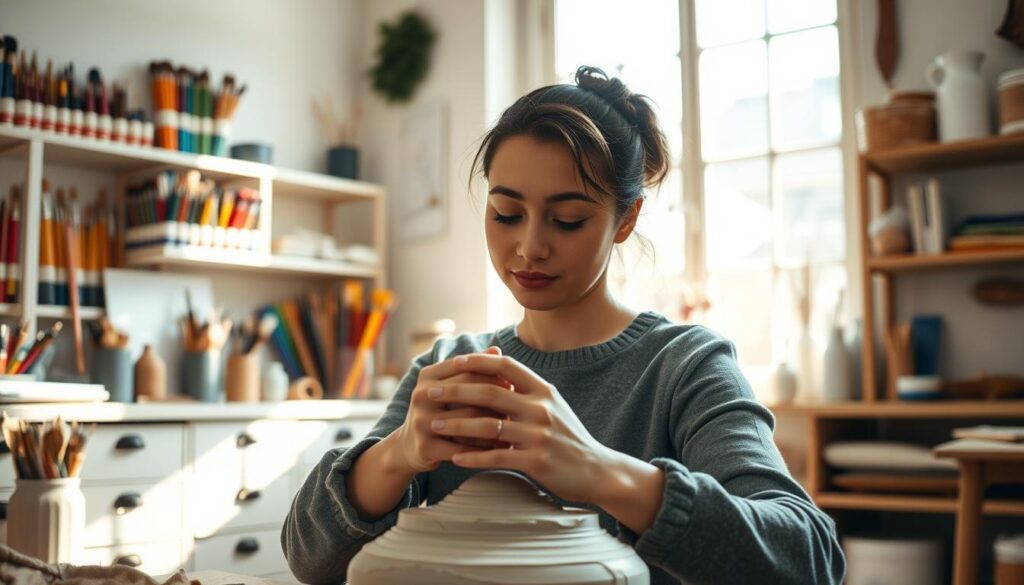
How Bad Art Fuels Creativity
Exploring ‘bad art’ can free us, letting us unleash our creativity without worry. It allows us to create freely, without the need for perfection. This freedom lets us express ourselves in a raw, honest way.
It creates a space where imaginative thinking can grow. This is because we’re not held back by strict rules.
Breaking Free From Traditional Standards
Traditional art often focuses on skill and realism. This can make it hard for those who feel they lack skill. But ‘bad art’ lets us break free from these rules.
We can explore new ways to express ourselves. It’s not about giving up skill, but valuing the journey, not just the end result.
Letting go of perfection allows us to find original ideas in unexpected places. This change can empower us, letting us use our unique voice and vision.
Encouraging Experimentation and Play
‘Bad art’ makes us want to try new things without fear of failure. This playful approach can lead to new discoveries. It helps us understand what we like in art.
By focusing on the process, we enjoy the journey of making something. We find happiness in creating, even if it’s not perfect.
Trying new things is key to growing our imaginative thinking. It challenges our beliefs and expands what we think is possible. This leads to personal and artistic growth.
Finding Joy in the Process of Creation
When we focus on the process, we find joy in creating. This joy keeps us motivated to explore our creativity. Embracing ‘bad art’ makes the creative journey more enjoyable.
As we continue, our view of ‘good’ and ‘bad’ art changes. We see that art’s value is in evoking feelings, sparking thoughts, and connecting us with others.
The Role of Community in Bad Art Engagement
The power of community is key in embracing ‘bad art.’ It creates a space where creativity can flourish. When people share their art, they build a supportive network. This network encourages innovative thinking and design creativity.
Artists get valuable insights and feedback from others. This helps them grow and improve. The communal approach to art-making is great. It lets people learn from each other and see different views.
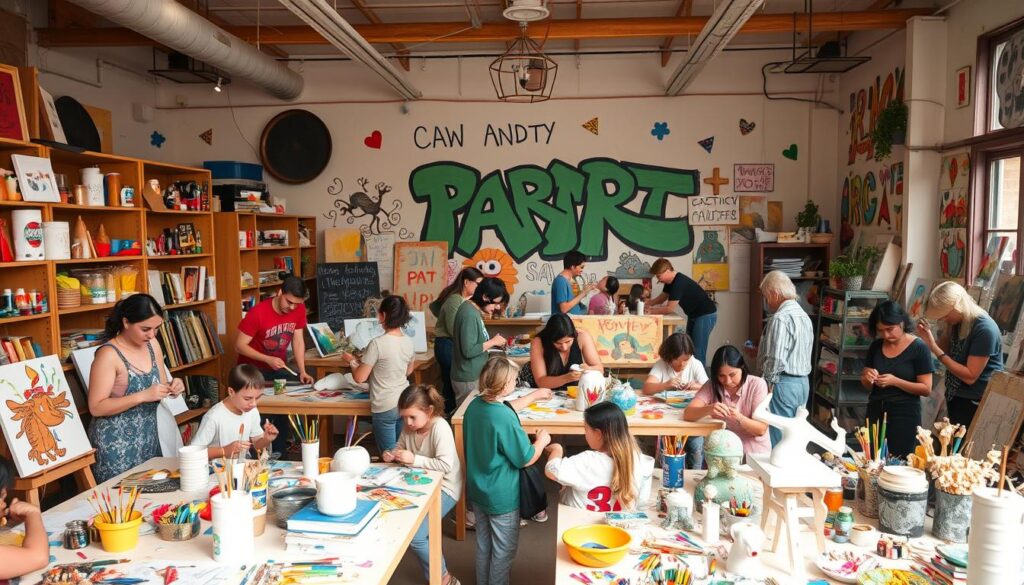
Sharing Unpolished Work with Others
Being part of a community that loves ‘bad art’ lets artists share their raw work. This is freeing. Artists can show their unedited creations without fear of being judged.
- Gain confidence in sharing work
- Receive constructive feedback
- Develop resilience in the face of criticism
Building Supportive Artistic Communities
Creating a supportive community is vital. It helps build a culture of creativity and inclusivity. By making a safe space for artists, we promote a positive environment.
Ways to build such communities include:
- Organizing regular art sessions or workshops
- Creating online forums or social media groups
- Hosting exhibitions or showcases for ‘bad art’
Celebrating Diverse Artistic Expressions
Celebrating diverse artistic expressions is key to a vibrant community. By embracing unique perspectives and styles, we encourage creativity and innovation.
This can be done by:
- Showcasing a wide range of artistic styles
- Encouraging experimentation and play
- Providing opportunities for artists to share their work
Overcoming Fear of Judgment
It’s important to face the fear of judgment to enjoy the freedom of ‘bad art.’ We’ll look at how to handle criticism, grow as artists, and let go of the need for perfection.
Understanding External Criticism
Dealing with criticism can be tough, but not all of it is helpful. Sometimes, what critics say reveals more about them than your art. It’s vital to learn to tell the difference between useful feedback and pointless criticism.
When you get criticized, ask if the feedback is clear and helpful. Does it help you reach your artistic goals? Being smart about this can turn criticism into a chance to improve, not just a source of fear.
Building Resilience as an Artist
Artists need to be resilient to create freely without fear. This means having a mindset that sees challenges as chances to grow, not threats to your ego.
Focus on the process, not just the end result. Enjoy the journey and celebrate small wins. This builds a positive, resilient attitude.
Techniques for Letting Go of Perfectionism
Perfectionism can hold you back from making ‘bad art.’ Letting go means seeing mistakes as part of the creative journey. Try setting time limits, using unusual materials, and being spontaneous.
For example, timed art sessions can help you create freely without worrying too much. Using unexpected materials can make your art more exciting and free.
| Technique | Description | Benefit |
|---|---|---|
| Timed Art Sessions | Create art within a set time frame (e.g., 10 minutes). | Encourages spontaneity and reduces overthinking. |
| Unconventional Materials | Use materials not typically associated with art (e.g., household items). | Adds an element of surprise and can lead to innovative creations. |
| Spontaneity Exercises | Engage in art-making without pre-planning or preconceptions. | Fosters creativity and helps in letting go of perfectionism. |
By understanding criticism, growing as an artist, and letting go of perfection, you can face judgment and enjoy ‘bad art.’ This journey boosts your skills, helps you grow, and lets you express yourself fully.
Practical Ways to Embrace Bad Art
To foster original ideas and imaginative thinking, it’s key to practice artistic expression without fear of judgment. This approach helps you break free from traditional art-making. It opens up new paths for creativity.
One great way to start is by adding spontaneity to your art routine. Here are a few tips to help you:
Setting a Timer for Spontaneity
Using a timer can really boost spontaneity in your art. It forces you to let go of the need for perfection. Instead, you focus on the journey, not the destination.
- Set a timer for 10, 20, or 30 minutes. Then, create without stopping or worrying about the outcome.
- Try this before a longer art session or as a standalone exercise to spark your creativity.
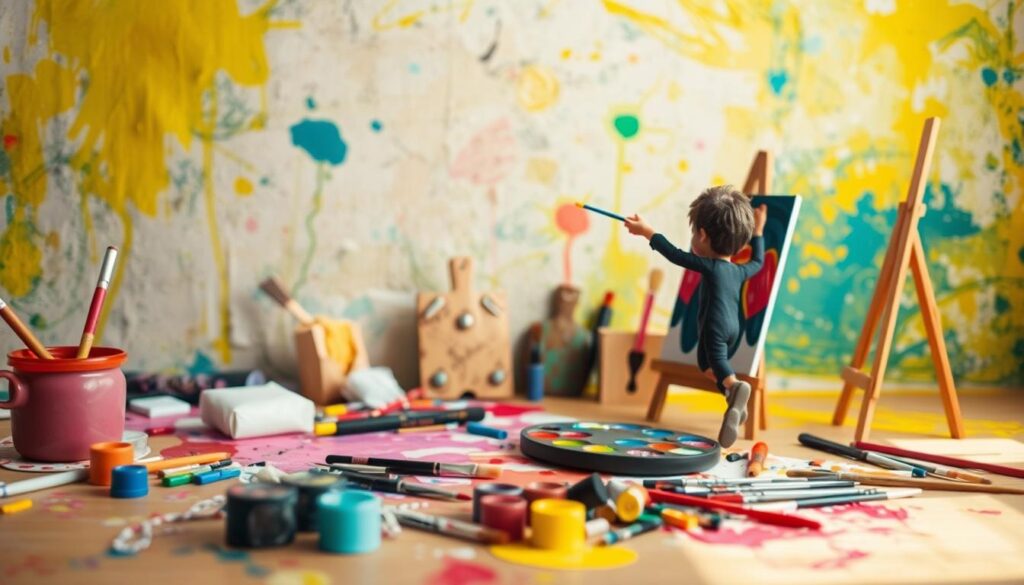
Establishing ‘No Rules’ Art Sessions
Another way to welcome ‘bad art’ is by having ‘no rules’ art sessions. This means setting aside time to create without any limits or expectations.
| Benefits | Techniques |
|---|---|
| Encourages experimentation | Use unconventional materials |
| Fosters creativity | Try new techniques |
| Reduces anxiety | Focus on the process, not the outcome |
Using Non-Traditional Materials
Exploring non-traditional materials is a great way to spark your creativity. It helps you go beyond what’s usual in art. Try different textures, colors, and objects to add depth and interest.
Here are some ideas to get you started:
- Use recycled materials like cardboard, fabric scraps, or newspaper for unique collages.
- Add natural materials like leaves, twigs, or sand to your art.
- Try painting with sponges, rags, or even household items for a different look.
By embracing these techniques, you can become more innovative and expressive in your art. This allows you to fully explore your creative side.
Bad Art as a Tool for Personal Growth
Exploring ‘bad art’ can change us, helping us grow and discover ourselves. By making art without worrying about perfection, we experience new things and gain insights.
Tracking Progress Over Time
Working with ‘bad art’ lets us see how we’ve grown over time. Looking back at our early work shows how our skills and views have changed.
This journey is inspiring, as it lets us celebrate our growth and see where we can get better. Keeping a creative journal helps track our progress.
“The act of creating is a journey, not a destination. Through ‘bad art,’ we learn to appreciate the process and find joy in the act of making.”
Reflecting on Personal Experiences Through Art
‘Bad art’ offers a special way to look back at our lives. By making art, we understand ourselves better, including our feelings and experiences.
| Aspect | Reflection Through ‘Bad Art’ | Personal Growth Outcome |
|---|---|---|
| Emotional Expression | Exploring emotions through color and form | Increased emotional awareness |
| Creative Problem-Solving | Experimenting with different materials and techniques | Enhanced problem-solving skills |
| Self-Reflection | Using art to represent personal experiences and thoughts | Deeper self-understanding |
How Bad Art Can Reveal Insights About You
Getting involved in ‘bad art’ can show us surprising things about ourselves. By creating freely, we explore our inner world and find new parts of ourselves.
For example, the themes we keep coming back to in our ‘bad art’ might show us what really matters to us. We might discover interests or concerns we hadn’t noticed before.
As we keep creating, we learn more about ourselves and our role in the world. This journey helps us grow and become more creative.
The Impact of Social Media on Creativity
Social media has a big role in our creative paths, bringing both good and bad. It’s key to know how sites like Instagram, TikTok, and Pinterest shape our art.
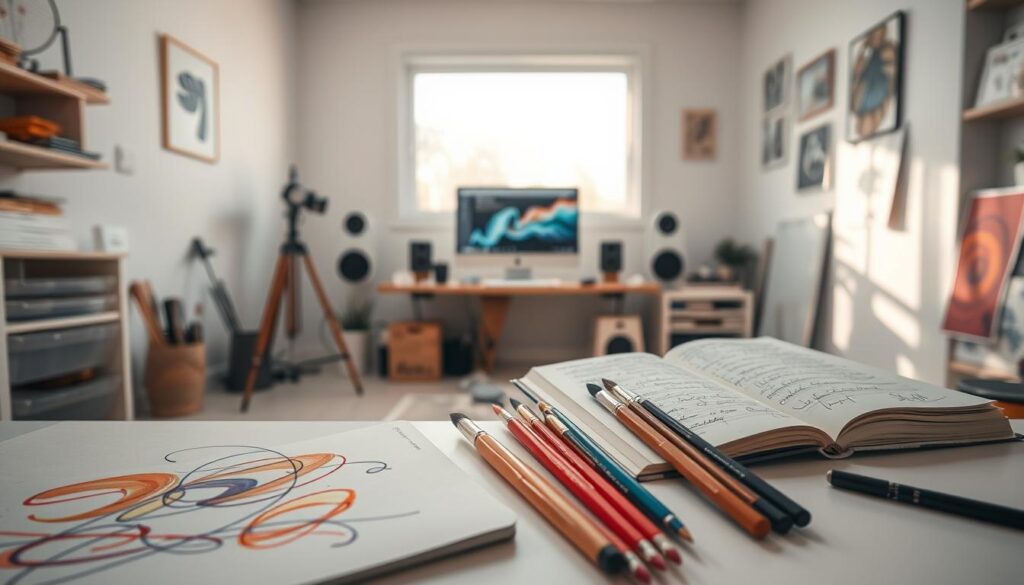
Sharing ‘Bad Art’ in a Digital World
Posting our ‘bad art’ online can free us from needing to be perfect. It lets us show our true, imperfect selves. Social media gives us a big audience, which can be scary but also opens doors to connect with others who value real art.
When we share our raw work, we join a community that loves innovative thinking and imaginative solutions. This can really boost our confidence, as we get feedback and support from those who understand our journey.
Finding Communities Focused on Authenticity
Social media is great for finding groups that share our interests and values. By joining these groups or following certain hashtags, we find endless inspiration and advice.
These communities focus on authenticity and creativity techniques. They offer a place where we can grow and improve as artists. We can share our work, join challenges, or just watch others’ creations. This helps us feel part of something bigger and keeps us motivated.
Navigating Online Critique and Support
But social media isn’t all good. It can be tough to handle feedback and criticism on our work. It’s important to learn to take constructive feedback and ignore the rest.
By focusing on good feedback and ignoring the bad, we can use social media to get better. This means being open to creativity techniques and trying new things.
Bad Art vs. ‘Good’ Art – Understanding the Spectrum
Exploring ‘bad art’ makes us wonder what makes art ‘good’ or ‘bad.’ It’s not about putting down skilled work or art’s emotional power. It’s about grasping the wide range of artistic expression.
Seeing art is very personal. It’s shaped by our life, culture, and what we like. What one sees as ‘bad art,’ another might call a masterpiece. This variety is key to the art world, letting many creative voices be heard.
The Subjectivity of Art Appreciation
Appreciating art goes beyond skill or looks. It’s about how the art touches us personally. This touch can come from many places, like our feelings, culture, and the artist’s goal.
Key Factors in Art Appreciation:
- Personal experiences and emotional connections
- Cultural and historical context
- Artist’s intention and message
Case Studies of ‘Bad Art’ Gaining Recognition
Many ‘bad art’ pieces have won fans over time. Robert Rauschenberg is a great example. His “Combines” series was once doubted but is now seen as groundbreaking in modern art.
| Artist | Notable Work | Initial Reception | Legacy |
|---|---|---|---|
| Robert Rauschenberg | “Combines” series | Skepticism | Pioneer of modern art |
| Vincent van Gogh | “Starry Night” | Struggled to gain recognition during his lifetime | Iconic figure in post-impressionism |
Redefining Success in Your Artistic Journey
Art success isn’t just about what others think or how much money you make. It’s about growing and feeling fulfilled through your art. Focusing on the journey, not just the end result, makes creating more meaningful.
Seeing success this way lets artists try new things without worrying about what others think. It encourages originality and creative thinking.
Conclusion: Embracing Your Inner Artist
Exploring ‘bad art’ shows us how creating without fear can change our lives. It helps us love making art more and grow as people. This way, we can think and design in new ways, letting our true selves shine.
Creative Freedom and Growth
Making ‘bad art’ lets us try new things and break free from old rules. It makes us more positive and creative. This boosts our art-making skills.
Nurturing a Lifelong Love of Creativity
Keep loving art as you go on your journey. The fun of making art is just as key as the final piece. By loving ‘bad art,’ you’ll keep enjoying creativity, finding happiness in it.
Embracing ‘bad art’ opens up your creative side, connecting you deeper with yourself. Keep exploring, creating, and enjoying the journey. It’s a path to growth and a more innovative you.
FAQ
What is ‘bad art’ and how can it benefit my creative journey?
‘Bad art’ means making art without worrying about how good it is. It’s about enjoying the making, not just the end result. This approach can unlock your creativity, help you see art-making in a new light, and grow as a person.
How can I overcome my fear of judgment when creating ‘bad art’?
To beat the fear of judgment, you need to be strong as an artist. Learn to handle criticism and let go of the need for perfection. Try new things, like setting a timer or using weird materials, to help you create freely.
Can ‘bad art’ be a valuable tool for personal growth and self-discovery?
Yes, ‘bad art’ can help you grow and learn about yourself. It lets you see how far you’ve come and understand your feelings better. By diving into ‘bad art,’ you can get to know yourself and your creative side better.
How can I share my ‘bad art’ with others and receive supportive feedback?
Share your ‘bad art’ online, on social media, or in local art groups. These places are full of people who love creativity and self-expression. They’ll support you and help you keep creating without fear.
What are some practical ways to incorporate ‘bad art’ into my artistic practice?
Try new things like setting a timer or making art without rules. Use materials you wouldn’t normally use. These ideas can help you enjoy the making process more and be more creative.
How can ‘bad art’ help me develop a more positive and resilient mindset?
‘Bad art’ helps you focus on the journey, not just the end. It lets you express freely, which can make you feel better about yourself. This way, you can enjoy making art more and find joy in the process.
Transform your home into a more peaceful and mindful sanctuary. Creating a Zen-inspired home environment is a core part of the “Live.Learn.Create” theme, focusing on peace, mindfulness, and a clutter-free space. Here is a curated list of Zen home items.
The Zen Essentials
These items are the building blocks of a calm, intentional living space.
- Candles & Scents:
- Scented Candles: Look for calming, natural scents like sandalwood, lavender, white tea, or bergamot. Choose candles made with soy or beeswax for a clean burn.
- Essential Oil Diffusers: A minimalist, sleek diffuser made of bamboo, ceramic, or glass.
- Essential Oil Sets: Look for blends specifically for relaxation, focus, or sleep.
- Incense & Burners: Natural incense sticks (e.g., palo santo, sage) with a simple, elegant burner.
The Zen Decor
This is about incorporating natural elements and simple design.
- Natural Materials:
- Wood or Bamboo Trays: For organizing candles, stones, or other small items.
- Ceramic Vases: Simple, unglazed ceramic vases in neutral colors like white, beige, or gray.
- Minimalist Art: Simple line drawings, abstract prints, or nature-inspired artwork.
- Hand-Carved Stone Coasters: Or other small stone sculptures.
- Textiles:
- Linen or Cotton Throws: A soft, neutral-colored throw blanket to add warmth.
- Jute or Sisal Rugs: These add natural texture and grounding to a space.
- Meditation Cushions (Zafu) & Mats (Zabuton): These provide comfort for meditation and add a serene touch to a room.
The Zen Ambiance
These items help create a peaceful sensory experience.
- Lighting:
- Himalayan Salt Lamps: These provide a warm, soft glow.
- Japanese-style Paper Lanterns: For a soft, diffused light source.
- Dimmable Smart Bulbs: To easily control the warmth and brightness of your lighting.
- Sound:
- Tabletop Water Fountains: The gentle sound of running water is incredibly calming.
- Wind Chimes: Made from natural materials like bamboo or metal for a soft sound.
- Bluetooth Speakers: Small, aesthetically pleasing speakers for playing ambient or meditation music.
- Nature:
- Bonsai Trees or Air Plants: Low-maintenance indoor plants that bring life and a touch of nature indoors.
- Zen Gardens: A small, tabletop sand garden with a rake and stones for a meditative ritual.
- Decorative Rocks & Pebbles: For bowls or as a decorative element.
Best Sellers https://amzn.to/3Vet1tI
New Releases https://amzn.to/4mwLjTi
Amazon Movers & Shakers https://amzn.to/4fPsZlP
Mindfulness Coloring Books https://amzn.to/4fQ0wMx
Personal Growth Coloring Books https://amzn.to/4lJeRf0
Health & Wellness https://amzn.to/4oRt24C
Zen Home Decor https://amzn.to/3VeA3i6
Zen Garden Decor https://amzn.to/4mXjT8D
Zen Garden https://amzn.to/3HQTVVB
- Mindfulness & Meditation:
- Physical Wellness:
- Habit & Productivity Tools:
- Books:
- Best-selling personal development books (Mindset, The 7 Habits of Highly Effective People, The Subtle Art of Not Giving a F*ck)
- Books on a variety of skills (coding, photography, writing.)
- Educational Gadgets:
- Smart pens that digitize notes (e.g., Rocketbook)
- Portable scanners for digitizing documents
- Laptops, tablets, and accessories
Create (Creativity, Innovation, Projects)
These products cater to your creative side, whether you are a artists, writer, or DIY enthusiasts.
- Creative Supplies:
- Adult coloring books or “paint-by-sticker” books
- Craft kits (e.g., candle-making, pottery, embroidery)
- Digital Creation Tools:
- General Inspiration & Making:

